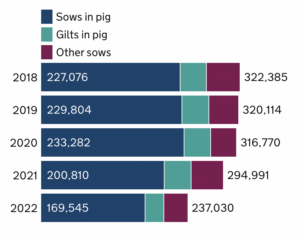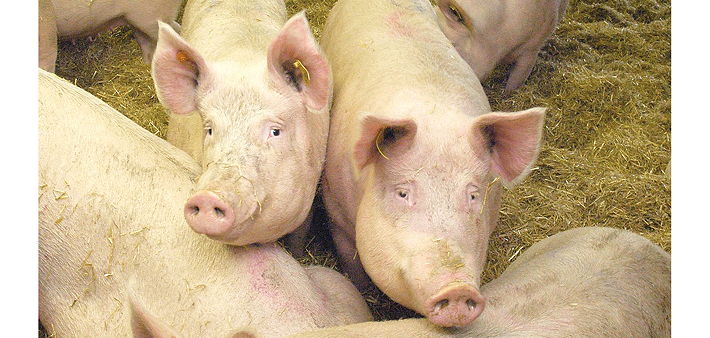England’s female pig breeding herd suffered a massive decline in 2022, as the industry endured massive financial losses on the back of soaring input costs and the pig backlog.
Defra census figures for December 2022 show a 20% decrease in the female breeding herd, compared with December 2021, alongside a 9.2% drop in total number of pigs in England.
The female breeding herd numbered 237,000 at the end of 2022, compared with 295,000 in December 2021 and 317,000 in 2020.
The number of in-pig sows in dropped from 200,810 in December 2021 to 169,545, 15.6% lower, while in-pig gilt numbers fell from just under 42,864 to 29,406, a proportionally greater 31.4% reduction. ‘Other sows’, either being suckled or dry sows kept for further breeding, were down from 51,355 to 38,080, a decline of 25.8%.
The reduction will be the result of a combination of some businesses getting out of breeding pigs altogether and others cutting back on numbers, while maintaining reduced production levels, highlighting the massive impact on pig businesses of the multiple crises that have afflicted the industry over the past two years
 The December figures follow June 2022 figures showing an 18% year-on-year decline in the English breeding herd.
The December figures follow June 2022 figures showing an 18% year-on-year decline in the English breeding herd.
The figures also start to show the impact of the breeding herd contraction on pig production. In terms of overall English pig herd, the 9.2% reduction takes it to since 3.7 million.This includes a 7.9% reduction in the number of fattening pigs, which account for 92% of all pigs).
Defra said, however, that this was a return to more usual levels after the large increase in December 2021 when thousands of fattening pigs were backed up on farm due to abattoir labour shortages.
Nonetheless, there are clear signs of significantly reduced pig numbers coming through the system in the early months of this year and AHDB is forecasting a 14% drop in pig production in 2023 on the back of the 2022 breeding herd decline.
AHDB has recently published net margin figures for Q4, showing producers lost on average £17/head, representing the ninth successive quarter of negative margins, with the industry, cumulatively estimated to suffered losses of in excess of £750 million over the past two years or so.




